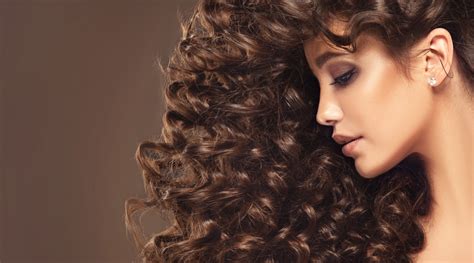Introduction:
Embracing your curls is a celebration of self-expression and individuality. Understanding the different types of curly hair can significantly enhance your hair care routine and help you achieve the desired results. This comprehensive guide dives deep into the spectrum of curly hair textures, providing valuable insights and practical tips for navigating the world of curls.

Understanding Curly Hair Texture:
Curly hair is primarily characterized by its curved shape, which results from the elliptical shape of its hair follicles. The curl pattern and texture vary significantly, influenced by factors such as ethnicity, genetics, and environmental conditions.
Curl Patterns:
The Andre Walker Hair Typing System, widely recognized in the hair industry, classifies curly hair into four main categories based on curl size and shape:
| Type | Curl Description |
|---|---|
| 3 | Loose, wide curls |
| 3B | Defined, springy curls |
| 3C | Coiled, corkscrew curls |
| 4 | Coily, tightly wound curls |
Subcategories of Curly Hair:
Within these primary categories, numerous subcategories exist, further refining the classification of curly hair.
Type 3 Curls:
- 3A: Curls are loose and defined, similar to beach waves.
- 3B: Curls are more prominent and springy, resembling corkscrews.
- 3C: Curls are tightly coiled and can be prone to frizz and tangles.
Type 4 Curls:
- 4A: Curls form a distinct “S” pattern and are densely packed together.
- 4B: Curls are tightly coiled and resemble a “Z” pattern.
- 4C: Curls are extremely tightly coiled and have a wiry texture.
Care Tips for Curly Hair:
Caring for curly hair requires tailored techniques to maintain its health and beauty.
- Moisturize Regularly: Curly hair tends to be drier than other hair types due to its increased surface area. Use moisturizing products, such as shampoos, conditioners, and leave-in treatments, to hydrate and prevent dryness.
- Condition Deeply: Deep conditioning regularly helps to restore lost moisture and nourish the hair shaft, improving curl definition and reducing frizz.
- Avoid Over-Washing: Curly hair benefits from less frequent washing than other hair types. Over-washing can strip the hair of its natural oils, leading to dryness and damage.
- Detangle Gently: Use a wide-toothed comb or detangling brush to remove knots and tangles without causing breakage. Start from the ends and work your way up to the roots.
Common Mistakes to Avoid:
- Using Harsh Ingredients: Avoid using products that contain sulfates, parabens, and alcohol, as these can be damaging to curly hair.
- Over-Styling: Excessive heat styling with flat irons or blow dryers can damage the delicate structure of curly hair. Use these tools sparingly and with proper heat protection.
- Neglecting Regular Trims: Split ends can travel up the hair shaft and damage the curls. Schedule regular trims to remove damaged ends and maintain healthy hair growth.
Pros and Cons of Curly Hair:
Pros:
- Volume and Body: Curls add instant volume and body to the hair, creating a visually striking effect.
- Versatile Styling: Curly hair can be styled in a multitude of ways, from loose, flowing waves to tight, bouncy curls.
- Unique Character: Each head of curly hair is unique, with its own distinctive pattern and texture.
Cons:
- Dryness and Frizz: Curly hair is more prone to dryness and frizz than other hair types.
- Tangling: Curls can easily become tangled, requiring careful detangling techniques.
- Time-Consuming Styling: Styling curly hair can be more time-consuming than other hair types, especially when considering wash day routines and deep conditioning treatments.
Conclusion:
Navigating the world of curly hair can be an empowering journey of self-discovery and appreciation. Understanding the different curl patterns, adopting suitable care practices, and avoiding common mistakes are essential steps towards unlocking the beauty and versatility of your curls. Embrace your unique hair texture and unleash its full potential by embracing the diversity of curly hair types.
